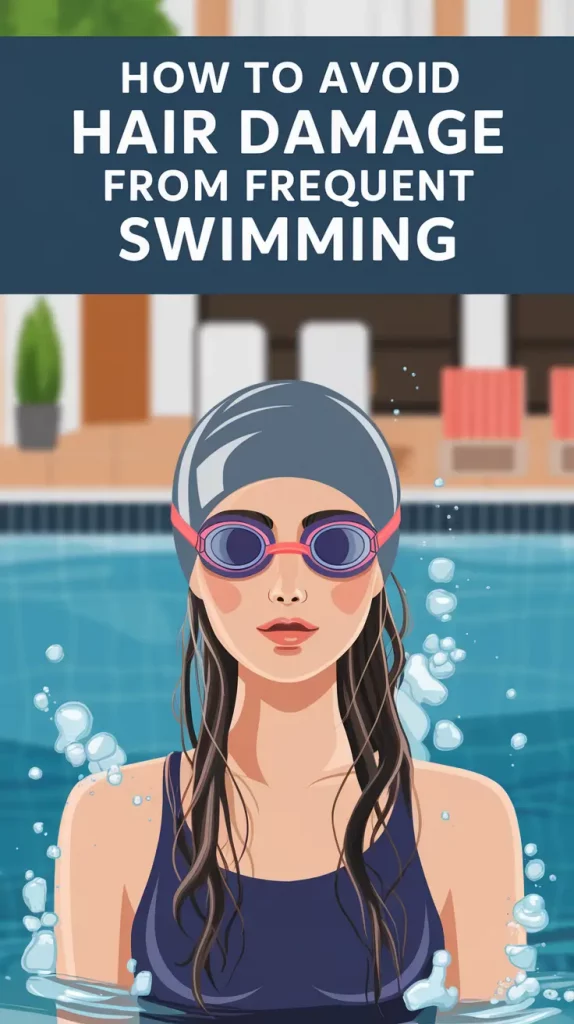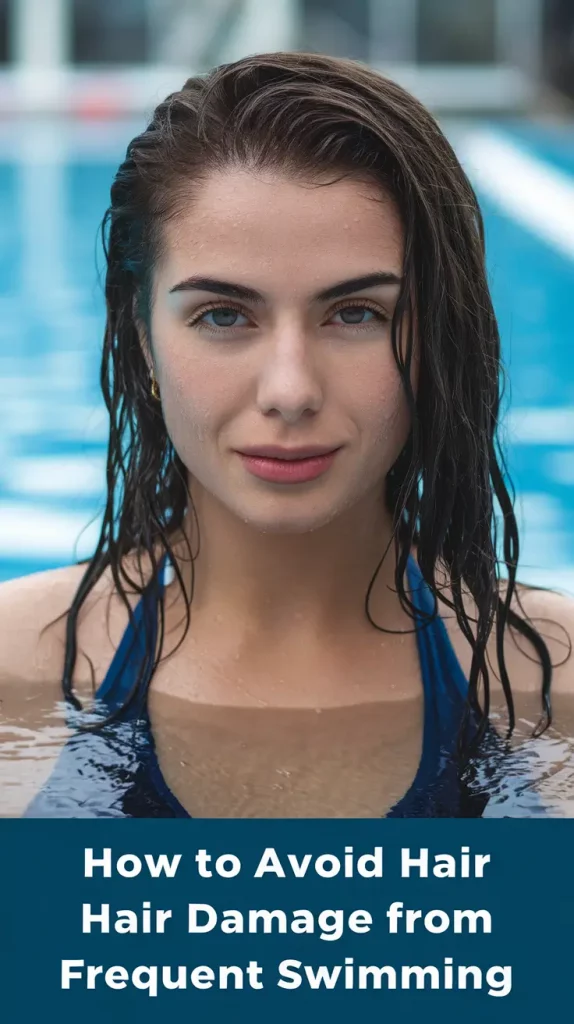How to Avoid Hair Damage from Frequent Swimming: Best Protection Tips for 2025
Have you heard that frequent swimming in a pool or the ocean can damage your hair’s structure within just a few weeks? Swimming is a wonderful means of exercise, and a great way to relieve stress and enjoy nature. However, it can significantly damage your hair if you do not plan ahead. Swimming exposes your hair to a whole lot more than just chlorinated pools, salt water, and the sun’s UV rays. The swimming pool is just the start.
Are you a daily swimmer, a weekend beach-goer, or even the parent of a child who spends most of their time in the water? If so, I am here to guide you on what hair does while swimming and how you can protect it. Don’t worry, we’ll discuss the most effective products, precautionary measures, and recovery strategies so you can have healthy and lustrous hair, even if you’re a frequent swimmer.
Who can benefit from this?
- Swimmers and fitness freaks of every level
- Guardians of children who frequently engage in swimming
- Individuals with colored or treated hair
- People with dry, curly, or damaged hair
Now, let’s get into it!

Effects of Swimming on Hair Health
Chlorinated Water: The Nemesis
A few checks need to be put in place to ensure that a swimming pool is hygienic with chlorine being one of them. Using chlorine in the swimming pool can be devastating for skin and hair as it strips one of the most important components, oil. Working without oil, one’s strands of hair gets dry, brittle and even breaks easily. Moreover, color treated hair is even more sensitive to such chemicals; for example, hair is able to loose color, and bleached hair can react with copper frequently found in swimming pools, turning it green.
Saltwater and Sun Exposure
While thinking that salty water is also dehydrating is incorrect, hair is usually left dehydrated and salt creates a more difficult environment. Adding salt to hair makes the hair dull and frizzy. Furthermore, hydration on other parts of hair greatly weakens hair cuticle meaning apart from causing split ends, the hair will also have limited color. All these things combined leads to a lot of damage.
Did you know? One hour of unprotected swimming can strip away up to 50% of your hair’s moisture barrier.
Hair Types Most at Risk
Color-Treated and Bleached Hair
These types of hair have already been pre-treated with chemicals, increasing their porosity. Increased hair porosity results in easier absorption of chlorine and saltwater, leading to higher damage levels.
Curly and Coily Hair
Compared to straight hair, curly hair is inherently drier in nature. The curls trap natural oils higher up the strand, making it dryer than straight hair. When exposed to pool chemicals or salt, the coarse curls become unmanageable and fragile.
Fine and Thin Hair
Fine hair is weak in density therefore it cannot withstand chemicals. When exposed to chemicals, fine hair is more likely to develop split ends, break, or even suffer damage when wet.

How to Protect Your Hair CAP Before Swimming
Apply a Pre-swim Hair Barrier
Applying a layer of protection before getting in the water is important. Grab your protection forms with:
- Leave-in conditioners that contain oils like Coconut oil or argon oil to help seal in moisture.
- UV protective sprays that shield from sun rays
- Silicone based leave=in conditioners that help coat and protects the hair shaft
Wear A Swim Cap (Yes, Really)
Not a fashion statement? Sure, swim caps won’t was you to any harlem night club. That said swim caps do create distance between your hair and the water.
Choose between:
- Silicone caps – Best for Complete Protection
- Lycra or Spandex – Stylish but hardly waterproof
- Blended – Best Representitive of feeling and having some protection
Quick Tip: Wet your hair with clean water before putting on the cap. This reduces chlorine absorption.
Pre-Wet Your Hair
Soaking your hair with clean tap water before a swim can make a huge difference. Hair acts like a sponge. If it’s already full of clean water, it will absorb less chlorinated or salty water.
Post-Swim Hair Care Routine
Cleanse Gently and Thoroughly
Right after swimming, rinse your hair with clean water and use a chelating shampoo to remove chlorine, copper, and salt. Look for:
- EDTA-based shampoos
- Sulfate-free formulas to prevent further drying

Deep Condition Regularly
Follow up with a moisturizing mask or conditioner that contains:
- Hydrolyzed keratin
- Aloe vera
- Shea butter or jojoba oil
Rebuild with Protein Treatments
If your hair feels mushy when wet and breaks easily, it may need protein. Use a protein mask once a week to restore strength.
Table: Best Post-Swim Hair Products (Available in the US)
| Product Name | Key Ingredients | Best For | Price (Approx.) |
|---|---|---|---|
| Malibu C Swimmers Shampoo | EDTA, Aloe Vera | Chlorine removal | $15 |
| Ouidad Curl Recovery Mask | Avocado oil, Keratin | Curly hair repair | $38 |
| Neutrogena Anti-Residue | Glycerin, Citric Acid | Fine hair, gentle cleansing | $10 |
What to Do If the Damage Is Already Done
Emergency Rescue Options
If your hair is already showing signs of serious damage:
- Go for a keratin treatment in a salon.
- Try a protein-rich mask at home.
- Cut off split ends to prevent further breakage.
Long-Term Recovery Plan
- Avoid heat styling for at least two weeks.
- Switch to silk pillowcases to reduce friction.
- Use a no-sulfate, no-paraben routine exclusively.
Have you ever had to rescue your hair after a summer of swimming? What worked for you? Share in the comments!
Latest Innovations in Hair Protection (USA Market 2025)
- Smart Swim Caps: New caps with UV-reflective lining and water-repellent tech
- Bond-building pre-swim serums: From brands like Olaplex and K18
- Eco-friendly leave-in barriers: With biodegradable silicones and reef-safe ingredients
Conclusion
Key Takeaways:
-
- Chlorine and saltwater strips moisture from the hair and causes it to become brittle.
- Taking preventative measures with oils and conditioners, as well as swim caps, are much more effective.
- Proper care after swimming is essential: cleanse, hydrate, and restore hair.
- Swimmer-specific products are easily accessible in the US.
- In 2025, new tech will make protection more accessible.
Swimming can be enjoyed without sacrificing hair health. With the right preparation, protection, and post-care, swimmers can enjoy the water without worrying about hair damage.
What are your tips for hair protection while swimming? Tell us in the comments!
Share this article: [Facebook] [X]

